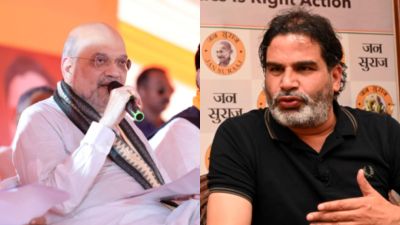Springing back to life
Scientists at BARC are using nuclear technology to revive dead springs in Uttarakhand...

THOSE seemingly endless brooks that trickle down the hills of Uttarakhand are fast drying up. But now, the Bhabha Atomic Research Centre (BARC), encouraged by the success of nuclear technology in recharging underground water in the Himalayas, has helped bring water back to the hills.
Since 2003, BARC scientists have used isotope hydrology technology to recharge nearly 16 water sources in Uttarakhand. The water scarcity had led to a severe crisis at Gauchar in Rudraprayag district. There is no exact data on the number of springs and water sources that have dried up over the years in the state. However, state government officials believe the situation is alarming.
“We do not have the exact numbers but a large number of water sources, particularly in the districts of Tehri, Rudraprayag and Almora, that do not get adequate snow during winters have either dried up or discharge up to 40 per cent less water as compared to previous years,” said Harshpati Uniyal, chief general manager of the Utarakhand Jal Sansthan.
Scientists from BARC — at the initiative of M.A. Chidambaram, principal scientific advisor to the Government of India — went to Gauchar and collected water samples from the catchment areas of dried up springs and from water sources down below in the valley. “We then used nuclear technology to match the isotopes and establish the origin and route of the dead springs,” said Dr Gursharan, head of the isotope application division of BARC.
Once that was done, scientists built bunds so that water would start percolating into the earth. After establishing the catchment area of each spring, 33 water bunds and tanks to hold rain water were built. Villagers pitched in, with some generous help from the Himalayan Environmental Studies and Conservation Organisation.
Once the bunds and the tanks were ready, all that they had to do was to wait for the springs to get recharged. They did, and how. Water from the springs has risen to an average of 16 litres a minute from a scanty 2 litres a minute. Even at the peak of summers, when temperatures rose to 40 degree Celsius in the hills, the springs discharged not less than an average of 6 litres a minute.
“We found that the discharge of water had increased considerably and two new water springs had come up,” claimed Dr. Shivanna, one of the scientists who worked on the experiment.
BARC has decided to train youngsters in isotope technology and help set up a laboratory at Dehradun. In May, a group of nine youngsters from J&K, Himachal Pradesh and Uttarakhand visited BARC for a training session.
Uttarakhand is going through a severe water crisis with women having to trek miles to fetch drinking water. “With technological help from BARC, we will replicate the experiment at 10 other places in the state,” said Harshpati Uniyal, chief of the Uttaranchal Jal Sansthan.
The Garhwal Regimental Centre at Lansdowne in Pauri Garhwal has also selected a village where the isotope technology will be used to recharge a spring.
S.M.A. Kazmi





- 01
- 02
- 03
- 04
- 05


























